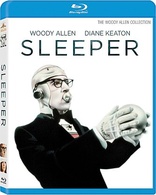Sleeper Blu-ray Movie
HomeSleeper Blu-ray Movie 
The Woody Allen CollectionMetro-Goldwyn-Mayer | 1973 | 87 min | Rated PG | Jan 15, 2013
Movie rating
7.3 | / 10 |
Blu-ray rating
| Users | 0.0 | |
| Reviewer | 4.0 | |
| Overall | 4.0 |
Overview
Sleeper (1973)
After awaking from cryogenic suspension, a '70s man gets mixed up with a future revolution.
Starring: Woody Allen, Diane Keaton, John Beck (II), Mary Gregory, Don KeeferDirector: Woody Allen
| Sci-Fi | Uncertain |
| Comedy | Uncertain |
Specifications
Video
Video codec: MPEG-4 AVC
Video resolution: 1080p
Aspect ratio: 1.85:1
Original aspect ratio: 1.85:1
Audio
English: DTS-HD Master Audio Mono (48kHz, 24-bit)
Spanish: Dolby Digital Mono
French: Dolby Digital Mono
Subtitles
English SDH, Spanish
Discs
25GB Blu-ray Disc
Single disc (1 BD)
Playback
Region free
Review
Rating summary
| Movie | 4.5 | |
| Video | 4.0 | |
| Audio | 3.5 | |
| Extras | 0.5 | |
| Overall | 4.0 |
Sleeper Blu-ray Movie Review
The Sleeper Must Awaken—and Then Fall Down
Reviewed by Michael Reuben January 20, 2013For a long while now, Woody Allen's reputation has been that of a prolific, uneven and eccentric auteur with a checkered personal life. There was a time, though, when he was considered one of America's funniest filmmakers, although that turned out to be a relatively brief period in an extended and productive career. Although it's almost unfair to play favorites among the gems from this early era in Allen's filmography, Sleeper is clearly the high point. Bananas, Take the Money and Run, Everything You Always Wanted to Know About Sex and Love and Death all have inspired and memorable routines, but none of them matches Sleeper's effortless ability to keep expanding on its initial comic premise. And Sleeper has held up better than any of Allen's early comedies, probably because so much of the film's slapstick humor is a homage to silent films, and these things don't date. Sleeper was the second film Allen made with Diane Keaton, but the first time he directed her. Their first work together was the previous year's Play It Again Sam, which Allen adapted from his original play and was directed for the screen by Herb Ross. Allen and Keaton would go on to make four more films together, include the multi-Oscar winning classic Annie Hall (1977), before parting ways. (They reunited in 1993, for Manhattan Murder Mystery, when Keaton did Allen a favor by replacing Mia Farrow at the last minute after Farrow's public and acrimonious split from Allen.) Viewed with 20-20 hindsight, Sleeper reveals the seeds of the distinctive comic chemistry that would lend such poignance to the impossible romance at the heart of Annie Hall, but in Sleeper, that chemistry, like everything else, was played strictly for laughs. Sleeper is notable among Allen's works for yet another reason. For many years, Allen was so identified with New York City that he seemed not to exist outside of it. Especially after Manhattan (1979), the city became the uncredited additional character in every film. But Sleeper was shot largely in Colorado, and it's set at a future date in what used to the American southwest, when no one lives in cities anymore. There isn't a single scene that resembles an urban landscape. Sleeper reminds us that Allen's recent habit of traveling around Europe making films in far-off places isn't some late development of a mature talent. It's a return to an earlier era. Even in his Manhattan phase, Allen was always far more visually adventurous than he's often given credit for.
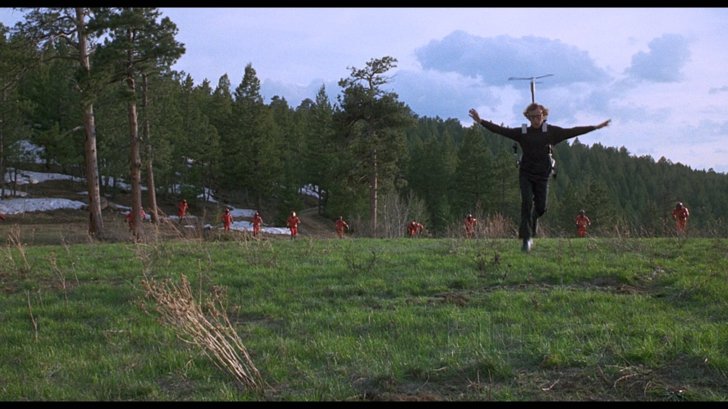
Sleeper is set in the year 2173. The world is ruled by an Orwellian police state presided over by "Our Leader", whose beatific image beams from everywhere. (The face is that of Dr. Timothy Leary, the famous Sixties proponent of LSD.) References to a terrible war suggest that Our Leader's reign was established in its aftermath. The war also seems to have destroyed many historical records, which creates opportunities for incidental jokes on subjects ranging from Stalin to Howard Cosell. A group of rebel scientists revive a man who was cryogenically frozen 200 years ago. Their goal is to obtain an operative who has no official identity in the current database and is therefore best positioned to penetrate government security to stop the Aries Project, a secret operation that they believe threatens what little freedom remains. When the scientists finish unwrapping the aluminum foil in which their subject was stored, they reveal the familiar mug of Woody Allen, complete with his then-trademark glasses. The name of Allen's character is Miles Monroe, and he once played the clarinet and ran a health food store in Greenwich Village. Miles went into the hospital for a simple procedure, but he was frozen when complications developed. As far as he knows, it's still 1973, and he's ill-prepared for the shock of discovering that everyone and everything he knows is gone. Of course, before he can be told the truth, Miles has to recover his cognitive abilities and motor functions, which occasions extended scenes of physical comedy worthy of any of the greats of the silent screen. While still organizing their attack, the rebel scientists are arrested by government forces, and Miles becomes a fugitive, at risk of having his brain reprogrammed if he's captured. ("My brain?" Miles exclaims in horror. "It's my second favorite organ.") Desperate and a fugitive, Miles encounters the lovely Luna Schlosser (Keaton). Shallow, spoiled, apolitical and a bad poet, Luna initially treats Miles as a dangerous invader, but she becomes radicalized when she discovers that her mere proximity to him has caused the government to designate her as an enemy of the state. Eventually, it is Luna who comes to Miles's rescue, and the two of them join forces to stop the Aries Project. That's the bare outline of the plot, but it often threatens to disappear under the non-stop onslaught of inspired visual humor that Allen weaves over, under and around it. The extended sequences in which Miles attempts to hide by impersonating a domestic robot are one of the film's high points (Luna returns the robot to its manufacturer to have the head changed, because the face is unattractive), as are Miles's constant battles with 23rd Century technology, from kitchen appliances to cars to jet packs. When Miles is captured, temporarily brainwashed and put to work in a government facility, the setting looks like something out of Chaplin's Modern Times. And a farm that grows huge fruits and vegetables by electronic enhancement becomes a pretext for inspired routines, including the most original variant of "a man slipping on a banana peel" since the joke was invented. Although Allen reportedly consulted with science fiction author Isaac Asimov for ideas about how the future would look, Stanley Kubrick's 2001 is the most obvious visual reference for Sleeper's vision, with its antiseptic corridors, wide, empty spaces and, in case anyone missed the parallel, the presence of Douglas Rain, familiar as the voice of HAL 9000, here voicing a sinister government computer. But where Kubrick strove for grandeur and mystery, Allen was after playfulness and mockery, and nothing better illustrates that tone than the climactic sequence after Miles and Luna are mistaken for scientists and led into the heart of the Aries Project, where, it can be fairly said, Miles discovers a third favorite organ.
Sleeper Blu-ray Movie, Video Quality 
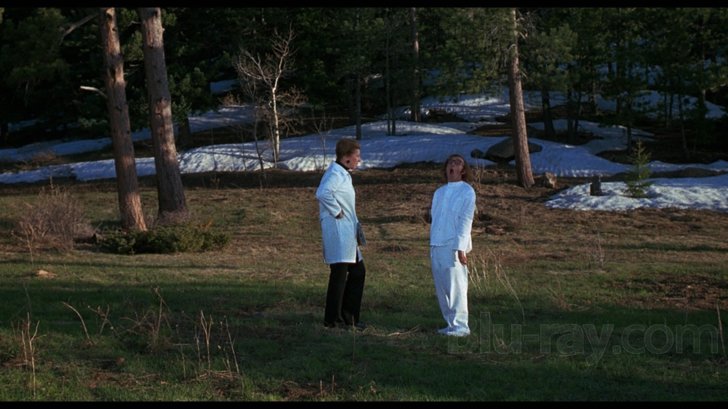
Sleeper did not yet reflect the visual stylization that Allen's films would acquire once he teamed with cinematographer Gordon Willis (with whom Allen made eight films, beginning with Annie Hall). The DP on Sleeper was David M. Walsh, Allen's previous collaborator on Everything You Always Wanted to Know About Sex. Walsh's reliably conventional lighting was ideal for Allen's early comedies; it made Walsh a favorite in later years of comedy directors like Herb Ross (The Goodbye Girl) and Arthur Hiller (Silver Streak and Outrageous Fortune). Walsh also shot the Goldie Hawn/Chevy Chase hit Foul Play. The image on MGM's 1080p, AVC-encoded Blu-ray is truly impressive for a 40-year-old film. The source material is in pristine shape; the colors are vivid; and the detail in sets, locations, costumes and faces is remarkable. The film's grain structure appears somewhat coarser and more exaggerated in screen captures than it did in motion during playback, but the important point is that it has been reproduced naturally and accurately, without filtering or reduction. Blacks are accurate without crushing, and contrast is sufficient without being exaggerated. Since Sleeper clocks in at a trim 87 minutes and the disc includes no extras other than a trailer, a BD-25 is more than sufficient to contain the film without compression artifacts.
Sleeper Blu-ray Movie, Audio Quality 
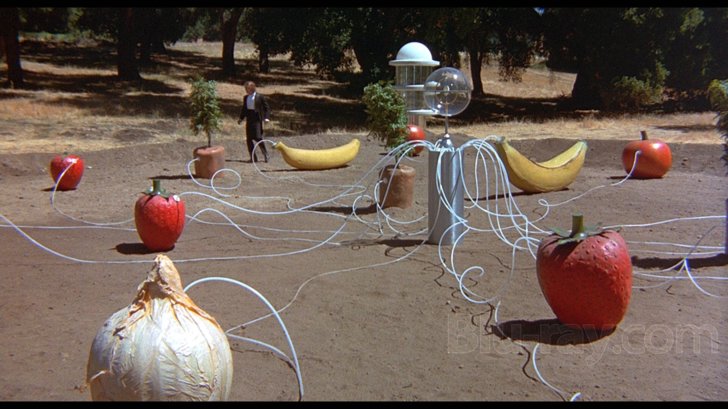
Allen is famous (or is it notorious?) for his mono soundtracks, and Sleeper's is presented as DTS-HD MA 1.0. What is less often noted about Allen is that he has always wanted that single channel to sound as good as possible, and the fidelity and dynamic range on the Blu-ray's track are surprisingly rich, given the film's vintage. Voices are always clear, and the musical accompaniment, which consists of jazz and ragtime tunes, lacks the vintage quality that is so often heard in Allen's recent films, because the recordings were of contemporary performances by Allen and his band in the days when he regularly performed in public. The counterpoint between antique music and futuristic visuals is just one of Sleeper's many running jokes.
Sleeper Blu-ray Movie, Special Features and Extras 
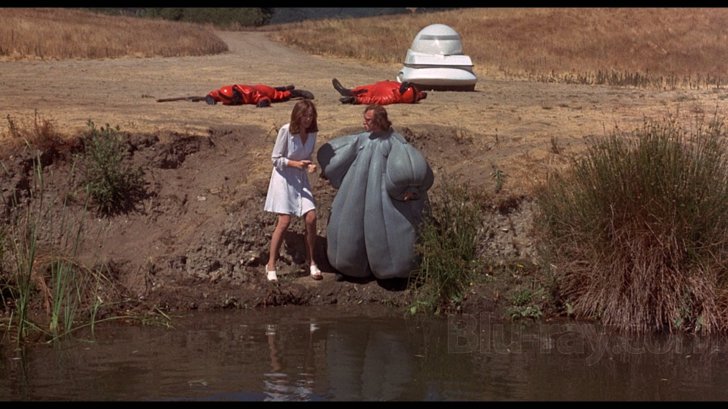
The disc's only extra is a trailer (1080p; 1.85:1, enhanced; 2:19), but it's an unusually good one. As was often the case for Allen's early trailers, he recorded footage especially for it. Of greater note on this disc, however, is the presence of a main menu. Regular readers of Blu-ray.com reviews will recall that I have routinely excoriated Fox Home Video, which handles the release of MGM films on Blu-ray, for its poor user interface on those titles. (Fox treats its own catalog titles very differently.) Sleeper, which is another MGM/Fox release, demonstrates that Fox is capable of taking a different approach. Unlike so many previous MGM/Fox releases, the disc loads to a main menu and returns there at the conclusion of the film. However, the pop-up menu accessible during playback still does not contain an option for "main menu", retaining the unnecessary and redundant selection for "pause". Also, while the disc has been authored with BD-Java, bookmarking is not included. However, if one uses the "top menu" button on a player's remote to access the main menu during playback, selecting "play" from the main menu returns you to the same spot in the film where you left playback. It's a step in the right direction.
Sleeper Blu-ray Movie, Overall Score and Recommendation 
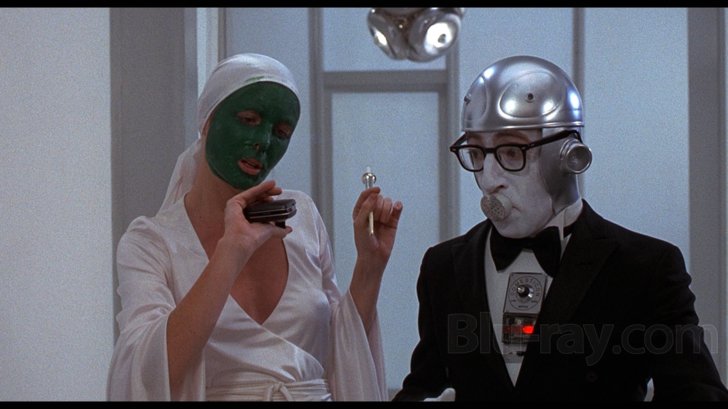
After Allen famously scandalized both critics and fans by making Interiors (1978), which didn't have a funny frame in its entire running time, he created a character named Sandy Bates, a director who wanders through Stardust Memories (1980) besieged by people telling him that they prefer his earlier movies, the funny ones. We never get to see the films by Sandy Bates that his fans prefer, but they would probably look something like Sleeper. Whatever one's feeling about Allen's later career, for the brief period when he was simply trying to be funny, he was very funny. Highly recommended.
Similar titles
Similar titles you might also like

Bananas
1971

Love and Death
1975

Broadway Danny Rose
1984

The Mad Adventures of Rabbi Jacob
Les aventures de Rabbi Jacob
1973

The Man Who Fell to Earth
Limited Collector's Edition
1976

Last Embrace 4K
Standard Edition
1979

Zelig
1983

Everything You Always Wanted to Know About Sex *But Were Afraid to Ask
1972

Monkey Business
1931

Crimes and Misdemeanors
1989

Shadows and Fog
1991

Meet Dave
2008

Greener Grass
2019

Monsieur Hulot's Holiday
Les vacances de Monsieur Hulot / 1953 and 1978 Versions
1953

After the Fox
1966

A Midsummer Night's Sex Comedy
1982

Spaceballs 4K
1987

Our Hospitality
Remastered
1923

Paul
Unrated + Theatrical
2011

Radio Days
1987
